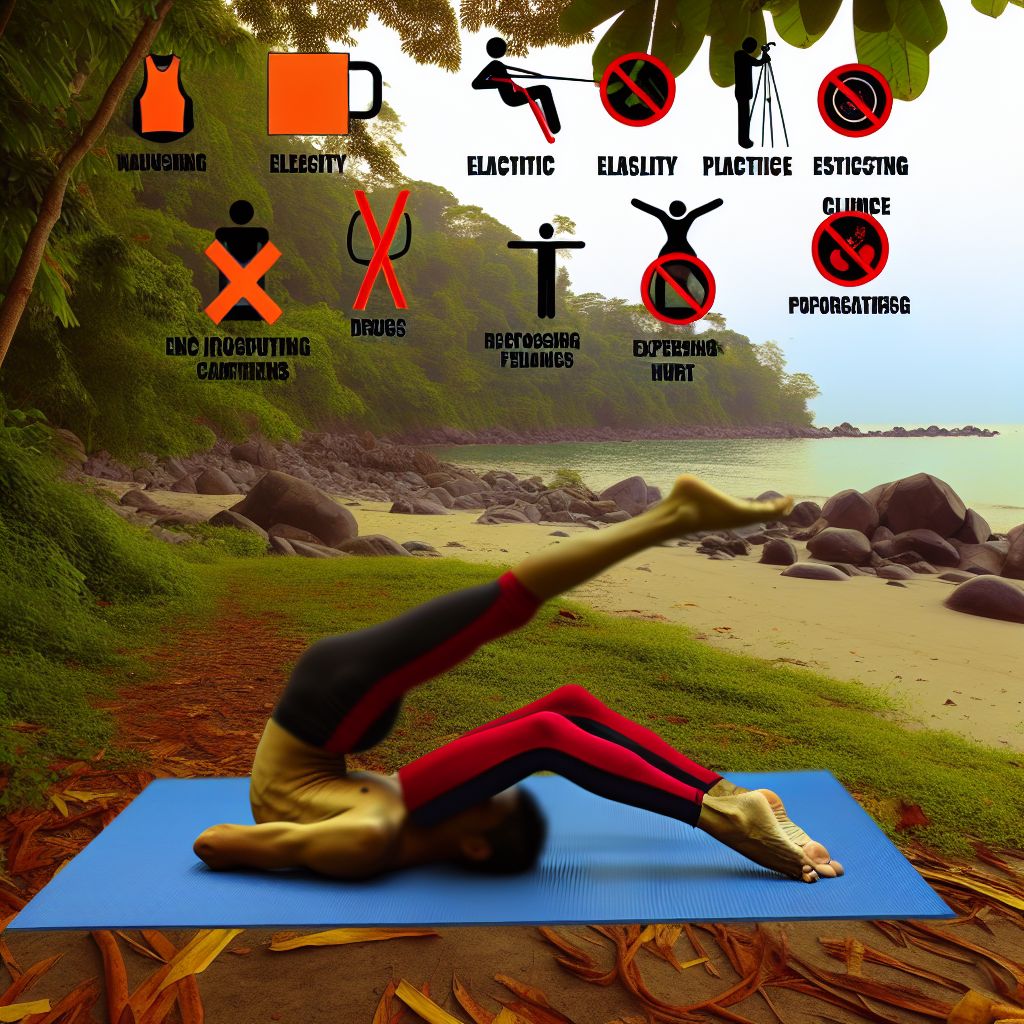Deutsch: Elastizität / Español: Elasticidad / Português: Elasticidade / Français: Élasticité / Italiano: Elasticità
Elasticity in the fitness context refers to the ability of muscle fibers, connective tissues, and skin to return to their original length and shape after being stretched or contracted. It is a critical physical property that affects how muscles and joints move and perform during various types of physical activity.
Description

Elasticity is essential for maintaining optimal movement function and preventing injuries during exercise. It allows tissues to stretch and contract effectively, which is crucial for activities involving dynamic motions, such as running, jumping, and lifting weights. Good elasticity helps to ensure that muscles and connective tissues can handle the stresses imposed by these activities without becoming damaged.
Application Areas
Elasticity is important in several key areas of fitness and physical health:
- Flexibility Training: Exercises designed to improve the elasticity of muscles and joints can enhance overall flexibility, which is important for a range of activities from yoga to martial arts.
- Injury Prevention: By maintaining or improving tissue elasticity, individuals can reduce the risk of injuries such as Sprains, strains, and tears, which are common in sports and physical activities.
- Athletic Performance: Athletes depend on optimal elasticity for peak performance, especially in sports that require quick, explosive movements, and agility.
- Posture and Balance: Elasticity in the muscles and connective tissue supports better posture and balance, which are vital for everyday health and performance in sports.
Well-Known Examples
- Dynamic Stretching: Involves moving parts of your body and gradually increasing reach, speed of movement, or both. This type of stretching improves elasticity in the muscles and joints.
- Plyometrics: Exercises that involve explosive movements such as jump squats and box jumps help to enhance muscle elasticity and power.
- Resistance Training: Incorporating elastic bands in training can improve muscle strength and elasticity by providing resistance when the bands are stretched during exercise.
Treatment and Risks
To effectively enhance and maintain elasticity in the fitness context, several strategies should be considered:
- Regular Stretching: Incorporating stretching routines before and after workouts can help maintain and improve elasticity, reducing the risk of injuries.
- Proper Warm-Up: Engaging in a comprehensive warm-up routine increases blood flow to the tissues, making them more elastic and prepared for exercise.
- Hydration and Nutrition: Staying hydrated and ensuring adequate protein intake can help maintain the health and elasticity of tissues.
- Age Considerations: Elasticity tends to decrease with age, so older adults may need to focus more on activities and treatments that maintain elasticity.
Similar Terms
- Flexibility: Often used interchangeably with elasticity, though flexibility is more broadly about the range of motion available at a joint, while elasticity specifically refers to the tissue's ability to return to its original state after stretching.
- Plasticity: In contrast to elasticity, plasticity refers to the tendency of a material to undergo permanent deformation under Load. In fitness, focusing on elasticity is beneficial for maintaining muscle and joint health.
Weblinks
- quality-database.eu: 'Elasticity' in the glossary of the quality-database.eu
- medizin-und-kosmetik.de: 'Elastizität' im Lexikon von medizin-und-kosmetik.de (German)
Summary
In the fitness context, elasticity is a fundamental property of muscles and connective tissues that allows them to return to their original shape after being stretched. This property is essential for performing a wide range of movements effectively and safely. Maintaining high levels of tissue elasticity through appropriate physical activities and lifestyle choices can significantly enhance athletic performance, flexibility, and injury prevention.
--
Related Articles to the term 'Elasticity' | |
| 'Flexibility training' | ■■■■■■■■■■ |
| Flexibility training is a type of physical activity that focuses on improving the range of motion of . . . Read More | |
| 'Stretch' | ■■■■■■■■■■ |
| Stretch in the fitness context refers to a deliberate and controlled lengthening of muscles and connective . . . Read More | |
| 'Flexibility' | ■■■■■■■■■ |
| Flexibility refers to the the ability to move joints or muscles through their full-range of motion. . . . . Read More | |
| 'Dynamic stretching' | ■■■■■■■■■ |
| Dynamic stretching in the fitness context refers to a type of stretching that involves moving parts of . . . Read More | |
| 'Appendicular Skeleton' | ■■■■■■■■■ |
| Appendicular Skeleton in the fitness context refers to the part of the skeleton that includes the bones . . . Read More | |
| 'Exercise for soccer player' | ■■■■■■■■■ |
| Exercise for soccer player refers to specific training routines and physical activities designed to enhance . . . Read More | |
| 'Functional training' | ■■■■■■■■■ |
| Functional training is a form of exercise that focuses on training the body for activities performed . . . Read More | |
| 'Articulation' | ■■■■■■■■■ |
| Articulation in the Fitness context refers to the ability of joints in the Body to move through their . . . Read More | |
| 'Quickness' | ■■■■■■■■■ |
| Quickness in the Fitness context refers to an individual\'s ability to react and move swiftly in response . . . Read More | |
| 'Muscle Recovery' | ■■■■■■■■■ |
| Muscle Recovery: Muscle recovery in the context of fitness refers to the process through which muscles . . . Read More | |
